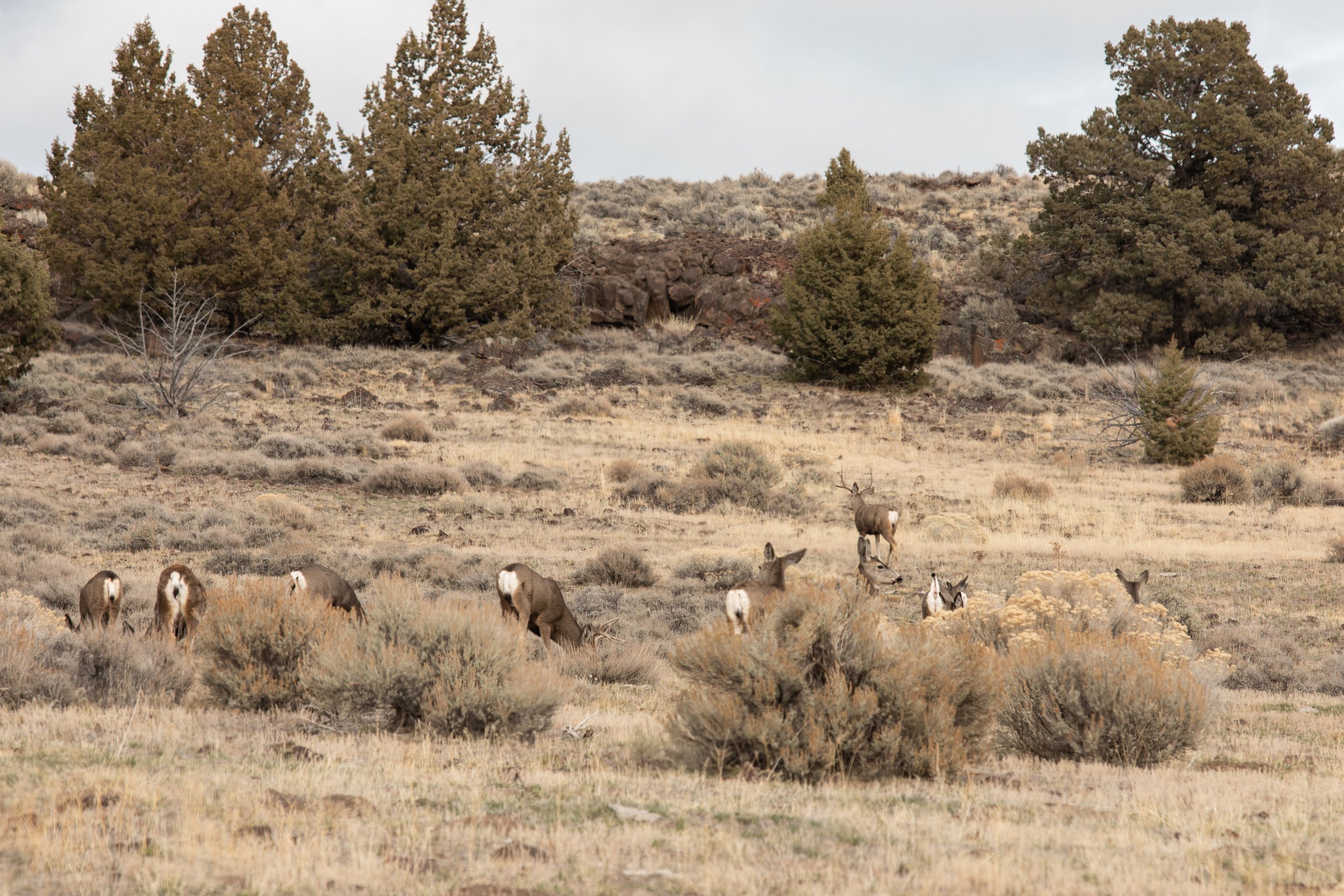
On the move
Why do wildlife move?
Central Oregon’s iconic wildlife species, from elk to mule deer to mountain lions, spend much of the year traversing the region’s geography, looking for food, shelter, or possibly a mate. Some of these species, such as mule deer, embark on biannual migrations, moving between summer ranges in the high mountains and winter ranges in the lower-elevation juniper and sagebrush steppe.
In the fall, on the heels of their breeding season, or the “rut,” mule deer turn their attention to migrating to lower elevations in order to survive the upcoming winter. “Muleys” carry out their age-old migration downslope, with remarkable fidelity along the same braided network of trails to the same lower elevation winter range of juniper woodland, scrub steppe, and grassland, where the snow will not be as deep, and forage, though sparse, is more available. Winter range is absolutely critical to the survival of deer and the health of the herd.
In the spring, mule deer reverse that journey, moving upslope to higher elevations. After near starvation through the winter, on their summer range they fatten up on lush grass, forbs, and browse. Does give birth to and nurse their fawns, and bucks hang out in bachelor groups and build strength and grow antlers in preparation for the fall rut again.
In addition to shoulder season migrations, mule deer also disperse or spread out somewhat across the landscape, on both summer and winter ranges. Indeed, year-round movement is a fundamental aspect of ungulate life history and behavior.
Barriers to wildlife movement
The combined effects of development, roads, climate change, and human activity are taking a toll on both wildlife and their habitat. For example, a recent report from the Oregon Department of Fish and Wildlife reveals that mule deer populations in Deschutes County declined 56% since 2004.
One of the most significant barriers to mule deer movement across the landscape are highways.
Highways present dangerous barriers that degrade and fragment wildlife habitat for a large number of vertebrate and invertebrate species, impede movement across the landscape critical to mule deer completing their migration as well as continually dispersing, and disrupt genetic connectedness of populations necessary for the long term health and viability of ungulate herds.
The Oregon Department of Transportation (ODOT) records thousands of Wildlife Vehicle Collisions (WVCs) statewide every year (estimates are that twice as many go unreported), resulting in human and wildlife injury or loss of life and cumulative property damage in the tens of millions of dollars annually.
What is a wildlife crossing?
Wildlife crossings, in the form of highway underpasses and overpasses, have been shown to be highly effective in reducing the wildlife-vehicle collisions that are a major source of mule deer mortality. For example, the three recently completed underpasses for wildlife below Highway 97 south of Bend have decreased these collisions on that stretch of road by around 90%.
